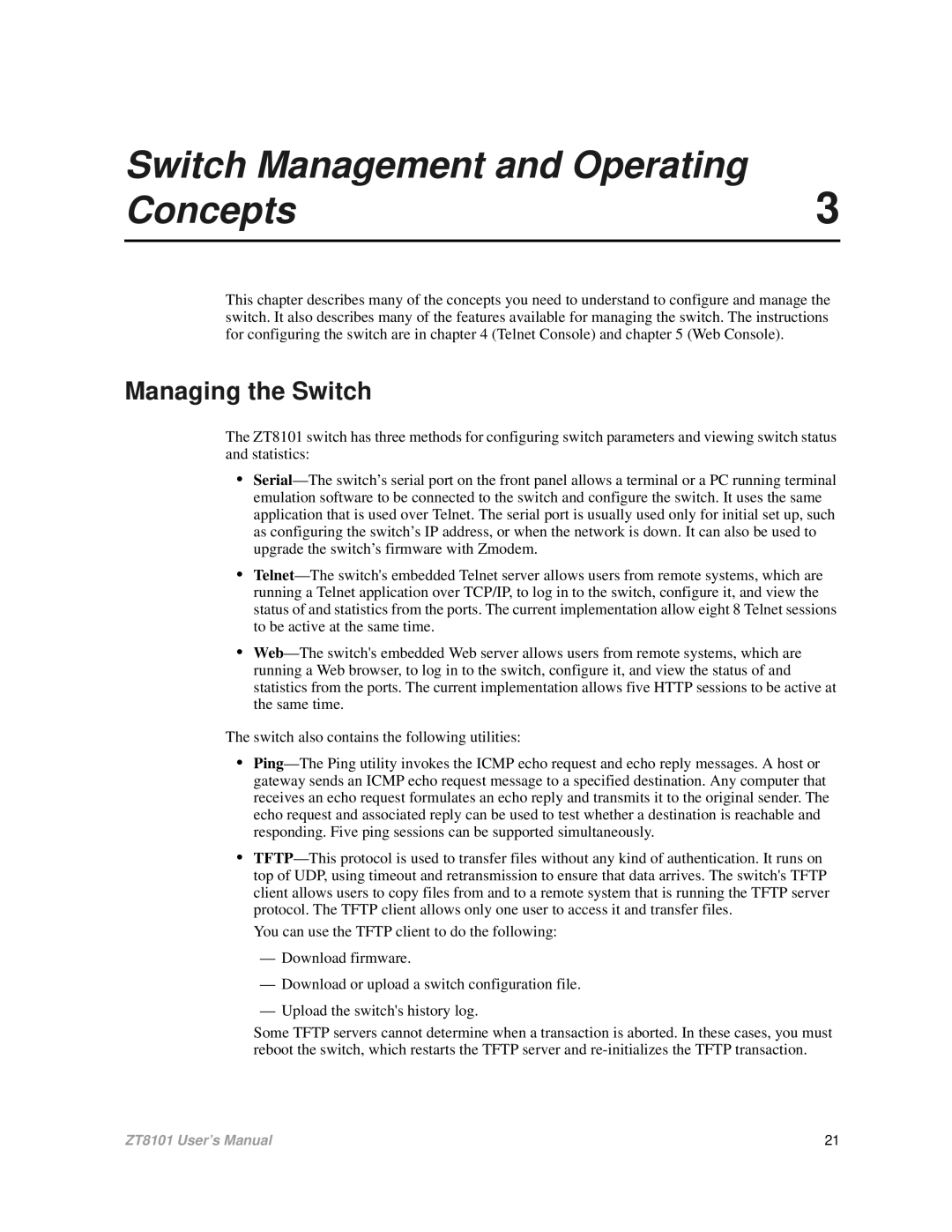Switch Management and Operating | 3 |
Concepts |
This chapter describes many of the concepts you need to understand to configure and manage the switch. It also describes many of the features available for managing the switch. The instructions for configuring the switch are in chapter 4 (Telnet Console) and chapter 5 (Web Console).
Managing the Switch
The ZT8101 switch has three methods for configuring switch parameters and viewing switch status and statistics:
•
•
•
The switch also contains the following utilities:
•
•
You can use the TFTP client to do the following:
—Download firmware.
—Download or upload a switch configuration file.
—Upload the switch's history log.
Some TFTP servers cannot determine when a transaction is aborted. In these cases, you must reboot the switch, which restarts the TFTP server and
ZT8101 User’s Manual | 21 |
